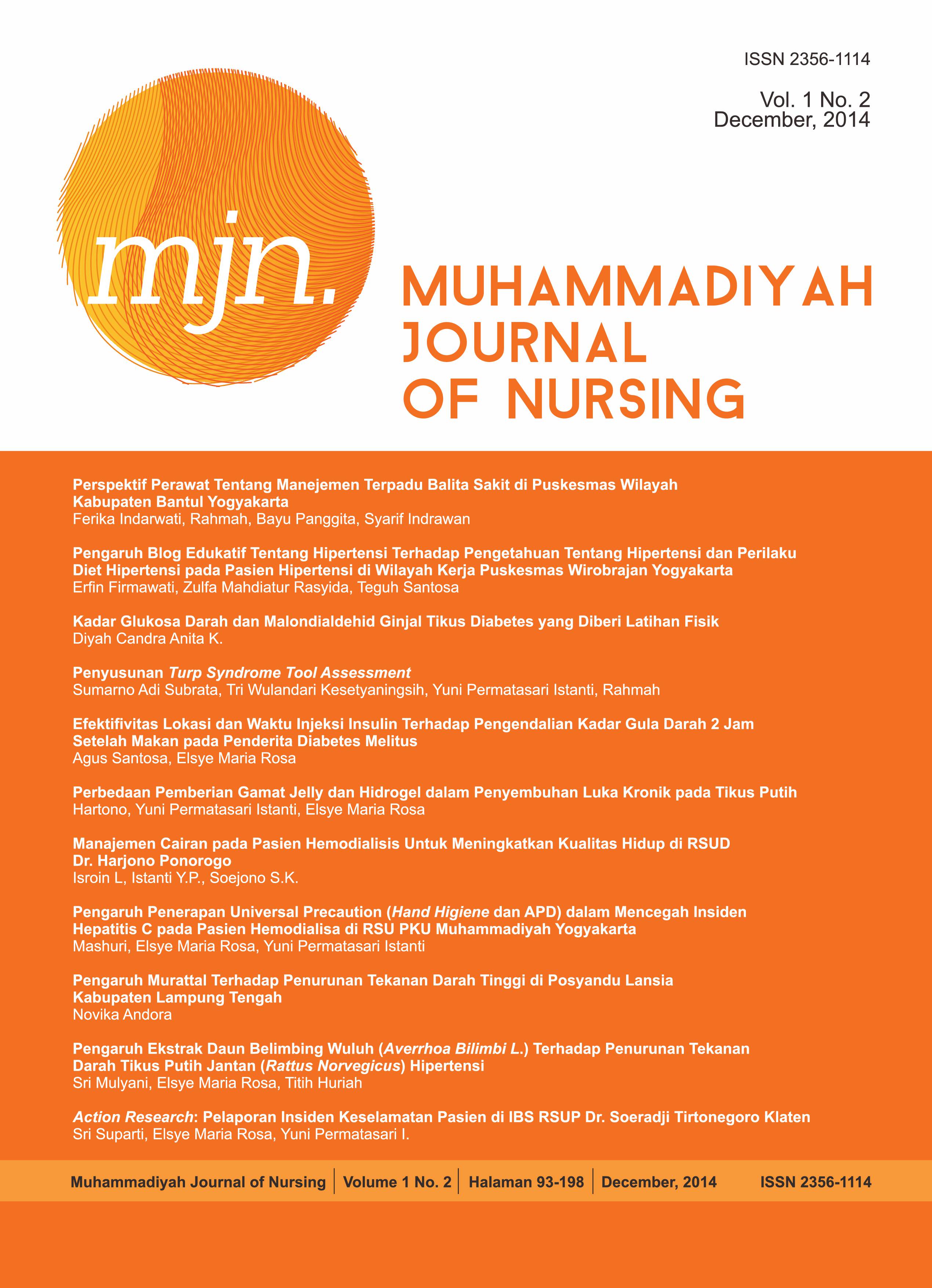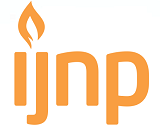Pengaruh Ekstrak Daun Belimbing Wuluh (Averrhoa Bilimbi L.) Terhadap Penurunan Tekanan Darah Tikus Putih Jantan (Rattus Norvegicus) Hipertensi
DOI:
https://doi.org/10.18196/ijnp.v1i2.658Abstract
Background: Hypertension is an important risk factor for coronary disease. This happens both in developed or developing country. Starfruit (Averrhoa bilimbi L.) has chemical constituents that are benefi cial for health. Phytochemical screening showed that crude drugs starfruit leaves contain fl avonoids, saponins, tannins and steroids/triterpenoids. Tannin has diuretic effect. Tannin and fl avonoid also contain antioxidants that can decrease blood pressure.
Objective: To determine of the eff ect of starfruit leaf extract to decrease blood pressure of hypertension white rats (Rattus norvegicus).
Methods: This study was a pure experimental research design with pretest-posttest control group. The Number of samples was 21 white rats, which had previously been induced with 2.5% NaCl and prednisone dose of 1.5 mg/kg BW for 15 days. The samples were divided into 3 groups; group 1 was given captopril treatment dose of 2.5 mg/kg BW, group 2 was given a dose of starfruit leaf extract 52.517 mg/100 gram BW; and group 3 was given doses of leaf starfruit extract 105.034 mg/100 gram BW of the rats. Treatment was given for 15 days and then the blood pressure of the white rats was measured.
Results: captopril dose 2.5 mg/kg BW was effective to decrease the white rats blood pressure (P <0.05). The Starfruit leaf extract dose 52. 517 mg/100 gram BW was effective to decrease white rats blood pressure (P <0.05) and starfruit leaf extract dose 105. 034 mg/100 gram BW was effective to decrease white rats blood pressure (p< 0.05).
Conclusion: captopril dose 2.5 mg/kg BW and starfruit leaf extract dose 105. 034 mg/100 gram BW mice had similar effectiveness to decrease white rats blood pressure.
Keywords: antioxidant, blood pressure, diuretic, starfruit
Downloads
Published
Issue
Section
License
License
Articles published in the IJNP (Indonesian Journal of Nursing Practices) are licensed under a Attribution 4.0 International (CC BY 4.0) license. You are free to:
- Share — copy and redistribute the material in any medium or format.
- Adapt — remix, transform, and build upon the material for any purpose, even commercially.
This license is acceptable for Free Cultural Works. The licensor cannot revoke these freedoms as long as you follow the license terms. Under the following terms:
Attribution — You must give appropriate credit, provide a link to the license, and indicate if changes were made. You may do so in any reasonable manner, but not in any way that suggests the licensor endorses you or your use.
- No additional restrictions — You may not apply legal terms or technological measures that legally restrict others from doing anything the license permits.
Copyright
Authors who publish with IJNP (Indonesian Journal of Nursing Practices) agree to the following terms:
- Authors retain copyright and grant IJNP (Indonesian Journal of Nursing Practices) the right of first publication with the work simultaneously licensed under an Attribution 4.0 International (CC BY 4.0) that allows others to remix, adapt and build upon the work with an acknowledgment of the work's authorship and of the initial publication in IJNP (Indonesian Journal of Nursing Practices).
- Authors are permitted to copy and redistribute the journal's published version of the work (e.g., post it to an institutional repository or publish it in a book), with an acknowledgment of its initial publication in IJNP (Indonesian Journal of Nursing Practices).















